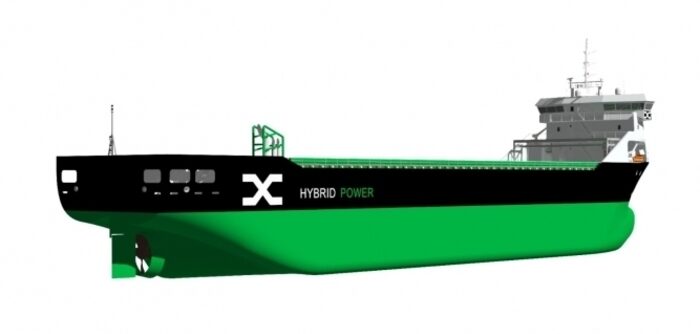Automation, energy and systems integration company Høglund has announced that it will supply the advanced hybrid and automation systems for six AtoB@C Shipping new-build vessels.
Set to be built at the Chowgule and Company shipyard in India, the 1A ice-class bulk vessels will feature batteries, shore-side electricity solutions and hybrid electric systems to enable zero-emission shipping when entering or leaving ports. The Høglund hybrid system includes a 1,000kWh battery for each vessel.
The latest systems will reduce vessel greenhouse gas and CO2 emissions by approximately 50% per cargo unit transported, compared with existing ships in AtoB@C Shipping’s fleet. The vessels are claimed to be the most efficient in the world in their class.
As part of Høglund’s supply scope, the company will supply its automation and hybrid systems for the vessels. The Integrated Automation Systems (IAS) will enable the alarm monitoring, control and power management systems to be linked for reliability and control of the vessel. The IAS will integrate with Høglund’s cloud-based ship performance monitor (SPM) and use data from the automation systems for real-time performance monitoring.
Delivery of the vessels will begin in the third quarter of 2023.
“We are excited to be working on another hybrid project, which demonstrates how quickly the industry is embracing this technology,” said Børge Nogva, CEO of Høglund. “Our systems will not just be helping to drastically reduce emissions but will also give crew and shoreside teams far better insight into their vessel performance, as our SPM uses data from the automation system to give a clear picture of vessel operations and ensure reliability for the long term.”
“We chose to work with Høglund because of their track record in delivering high-quality hybrid and automation systems, and their ability to work flexibly,” commented Janne Eklöf, technical director at AtoB@C Shipping. “We have worked closely with naval architects on the design of these vessels to create the most efficient ships of their type, and as such, we needed specialist expertise when it came to the systems that will make these vessels work. Through this collaboration, we’re excited to debut a new generation of bulk vessels and set a new standard for energy efficiency.”



